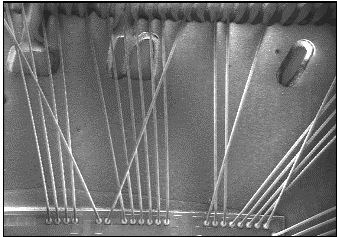Copper-infused Textile Research.
What are the benefits of copper?
Copper is a potent antimicrobial and has been shown to kill Corona Virus as well as many other harmful bacteria and fungi
Nontoxic naturally occurring in the environment and present in the bodies of all life on earth
Good for skin, muscles, bones and brains with evidence copper ions improve circulation and other benefits
Safely used for over 5000 years in everything from coinage to cooking pots
Approved to make medical claims internationally as a safe biocide
How does copper kill viruses & bacteria?
Copper works by disrupting the cell wall, proteins in the cell and DNA/RNA and can induce potent antimicrobial effects, by releasing free ions that generate (ROS) reactive oxygen species, capable of damaging DNA, RNA, and proteins. Copper ions are proven pathogen killers.
Space age science
The technology behind Copperfuse™ was designed for use with semiconductors. These cutting-edge micro-thin coatings are normally found in satellites, mobile phones and supercomputers.
Independent tests
Tests were conducted in UK labs according to the latest international standards.
Extensive independent tests proved Copperfuse™ fabrics are effective in eliminating pathogenic organisms such as:
Multi-resistant bacteria, coronavirus, influenza virus, norovirus and trichophyton
Greater than a 99.9% reduction in live microbes was realized in our UK laboratory tests.
Upon coming in contact with copper, multi-resistant microbes were killed within hours.
Copper halo effect demonstrated in trichophyton testing
The Copper Halo Effect on Trichophyton
The pictures here, were taken during the AATCC TM30 antifungal test which was conducted over 14 days, at Melbec Microbiology UK in October 2021. The top sample is Copperfuse™ the bottom sample is normal fabric, both have been placed in an agar nutrient solution and covered in Trichophyton fungal spores. The control fabric is clearly overwhelmed by the fungal spores, whereas the Copperfuse™ sample is not only free of contamination, but displayed a significant zone of inhibition.
The Copper halo effect has been discussed in research for many years. This ‘halo effect’ refers to the zone of inhibition copper creates where pathogens such as hospital borne infections, cannot survive. The AATCC TM30 test provides strong evidence for the Halo effect.
Survival of microbes on surfaces and textiles
The most common microbes may well survive on surfaces for months and can be a continuous source of transmission. Resistant Staphylococcus aureus (MRSA), resistant Enterococcus sp. (VRE), spore-forming Clostridium difficile (C dif.) and highly infectious Norovirus, and Salmonella are shed by infected patients and repeatedly contaminate the surrounding environment.
Read More
Copper is a “game-changer.”
Copper seems to be an effective and low-cost complementary strategy to reduce the transmission of several infectious diseases by limiting hospital and community infectious transmission.
Read More
Copper-coated face masks could help slow transmission of COVID-19: U of T researchers.
A team of researchers from the University of Toronto’s Faculty of Applied Science & Engineering are developing a new way to coat tiny particles of copper onto the inside of fabrics, including those used in face masks – a technology that could provide an extra layer of safety against COVID-19.
Read More
Copper, An Ancient Remedy Returning to Fight Microbial, Fungal and Viral Infections
Copper has potent biocidal properties. Copper ions, either alone or in copper complexes, have been used for centuries to disinfect liquids, solids and human tissue. This manuscript reviews the biocidal mechanisms of copper and the current usages of copper and copper compounds as antibacterial, antifungal and antiviral agents, with emphasis on novel health-related applications. These applications include the reduction of transmission of health-associated (nosocomial) pathogens, foodborne diseases, and dust mites loads and treatment of fungal foot infections and wounds.
Read More
A Novel Anti-Influenza Copper Oxide Containing Respiratory Face Mask
Protective respiratory face masks protect the nose and mouth of the wearer from vapor drops carrying viruses or other infectious pathogens. However, incorrect use and disposal may actually increase the risk of pathogen transmission, rather than reduce it, especially when masks are used by non-professionals such as the lay public. Copper oxide displays potent antiviral properties. A platform technology has been developed that permanently introduces copper oxide into polymeric materials, conferring them with potent biocidal properties.
Read More
Improvement of facial skin characteristics using copper oxide-containing pillowcases.
Copper plays a key role in several processes of skin formation and regeneration. Copper has been shown to be absorbed through intact skin. We hypothesized that sleeping on fabrics containing copper-impregnated fibres would have a positive cosmetic effect on the skin.
Read More
Neutralizing Viruses in Suspensions by Copper Oxide-Based Filters.
We report the capacity of copper oxide-containing filters to reduce infectious titers of a panel of viruses spiked into culture media. Enveloped, nonenveloped, RNA, and DNA viruses were affected, suggesting the possibility of using copper oxide-containing devices to deactivate a wide spectrum of infectious viruses found in filterable suspensions.
Read More
Putting copper into action: copper-impregnated products with potent biocidal activities
We hypothesized that introducing copper into clothing, bedding, and other articles would provide them with biocidal properties. A durable platform technology has been developed that introduces copper into cotton fibers, latex, and other polymeric materials. This study demonstrates the broad-spectrum antimicrobial (antibacterial, antiviral, antifungal) and antimite activities of copper-impregnated fibers and polyester products.






